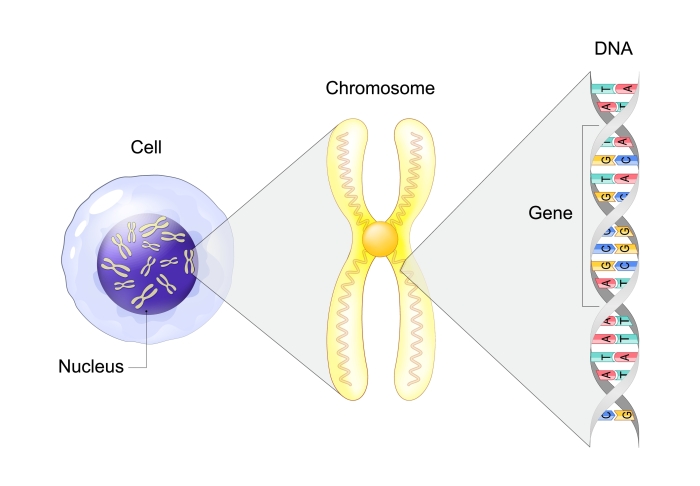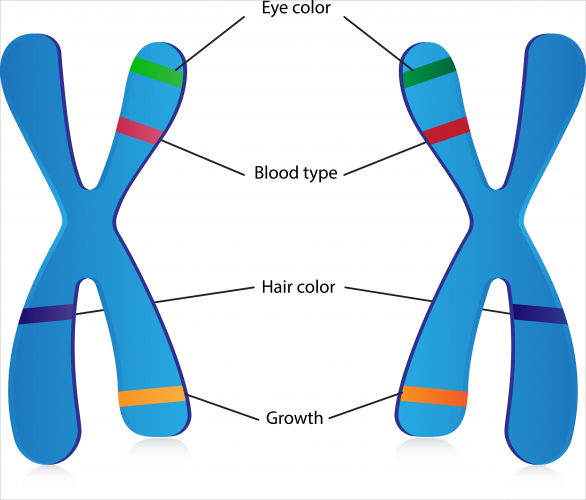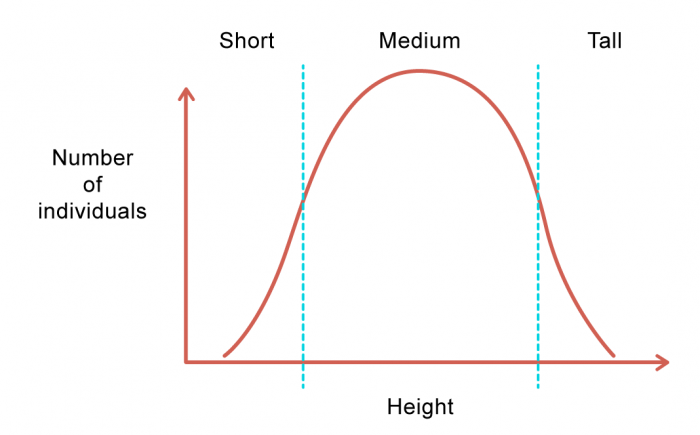If you want to pass information to someone else you might speak to them directly, send them a text or an email, you might even leave a video message.
But what about the characteristics that make you you, and every living thing what it is - how do they get passed along?
Well, that's what we're here to explore today.
First off, if we take you, you may be astonished to know that the instruction book for building you and operating you is held on ... an amazing chemical called DNA!
.jpg)
It might surprise you to learn that a chemical can hold a massive set of instructions, but that's the chemical that life on Earth is based on.
The story of the discovery is fascinating. Two scientists, Francis Crick and James Watson, worked hard to uncover DNA's structure, using information also gathered by other scientists like Rosalind Franklin and Maurice Wilkins. When they found out that it was two strands of chemicals, twisted around each other in what's called a 'double helix', the scientific world was astounded.
.jpg)
Anyway, that's your instruction book - DNA - and that's what your chromosomes are made of. You're a human (hopefully, not a pesky alien come to find out about the workings of the human race!) and that means you have 46 chromosomes held in the nucleus (labelled 'P' above) of every cell in your body.
 Look at this carefully, as it explains the structure really well.
Look at this carefully, as it explains the structure really well.
In the womb, you received 23 of those chromosomes from your mum and 23 from your dad to make up your human number of 46.
Now, along each chromosome are areas called genes that hold sets of instructions for a particular part of the body. For example, there'll be a gene that makes sure that your eyes are the right colour, another gene that tells the heart how to contract and pump blood - literally every aspect of your body!

In this diagram, you can see two of your 46 chromosomes and certain genes, controlling different aspects of your design, have been labelled.
Now, when these genes are passed on from parents to offspring, the information is jumbled up in such a way that every combination of genes is different - that's why brothers and sisters may look similar but are unique. They contain the same genes but in a unique combination. This is really important as it is the basis for variation within a species.
You have your own characteristic features which are caused by a combination of inherited characteristics and ones caused by your environment. For example, take your hair - you were born with a particular colour hair (that's an inherited characteristic, caused by instructions on your genes) but you may choose to change it to a different colour at some point in your life (that would be an environmental characteristic). Can you see that?

This variation within a species is very important and there are two types - continuous variation and discontinuous variation. What's that about?
In fact, it's simpler than it sounds! Basically, (to take some classic examples) some factors in the students in your class will show a continual range of variation, such as their height or their arm span. If you were to measure these, and plot them on a graph, you'd get what's called a normal distribution - that's a bell-shaped curve, with small values at one end, large values at the other and most people's measurements falling in the middle:

A classic example of discontinuous variation within the students in your class would be blood groups. Instead of it being continuously variable, there are only certain blood groups people can be. They vary from blood groups O to A, B and AB. That's it!
OK, so that was an awful lot to get through, and it's not that easy to understand, so why not check it through again before you tackle the questions.
By the way, you can come back to this page any time by hitting the red button on the right-hand side of every page. Good luck!








